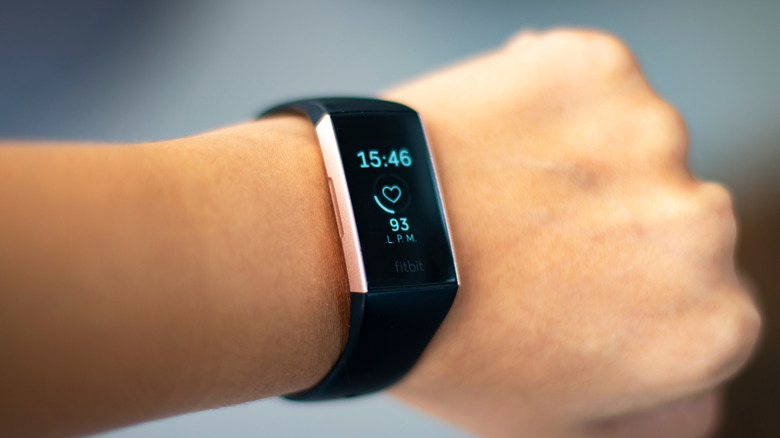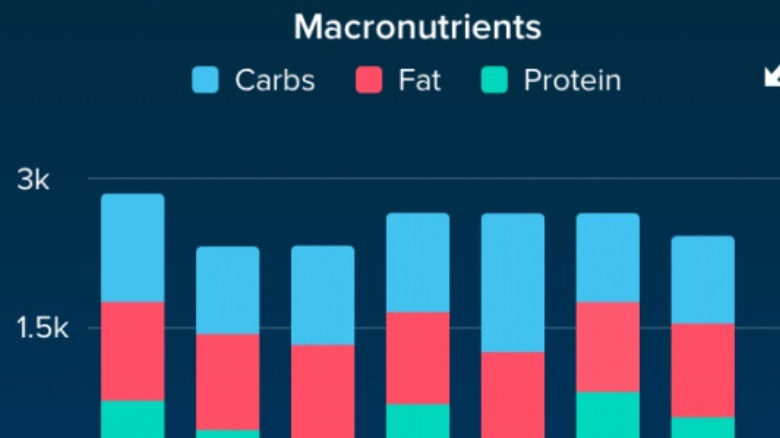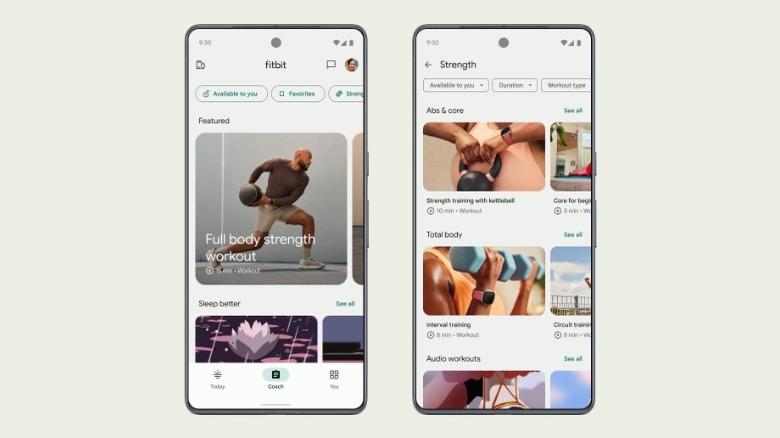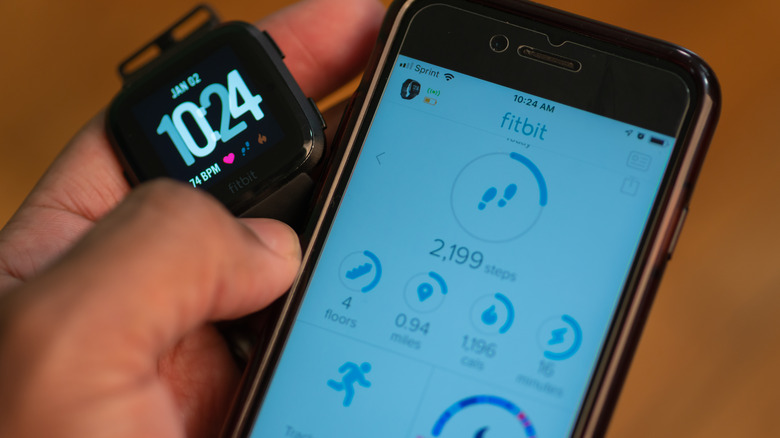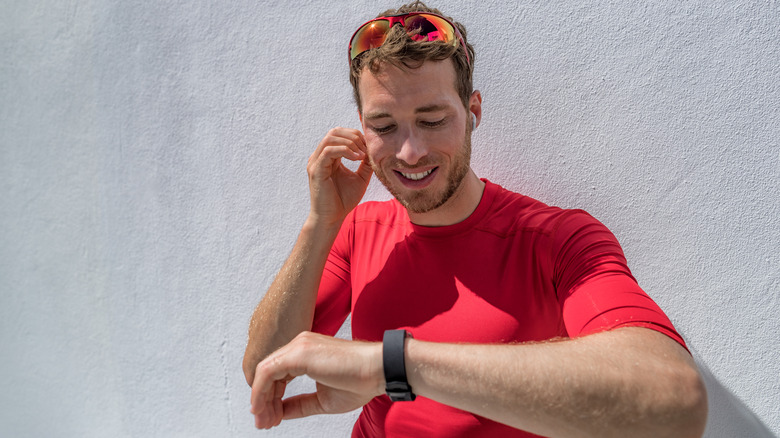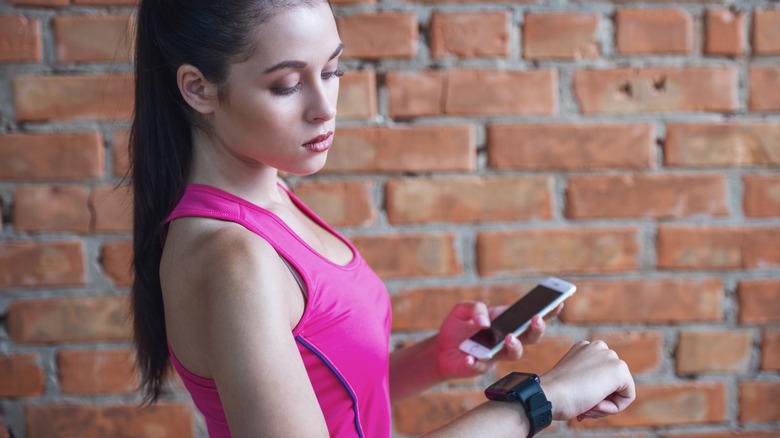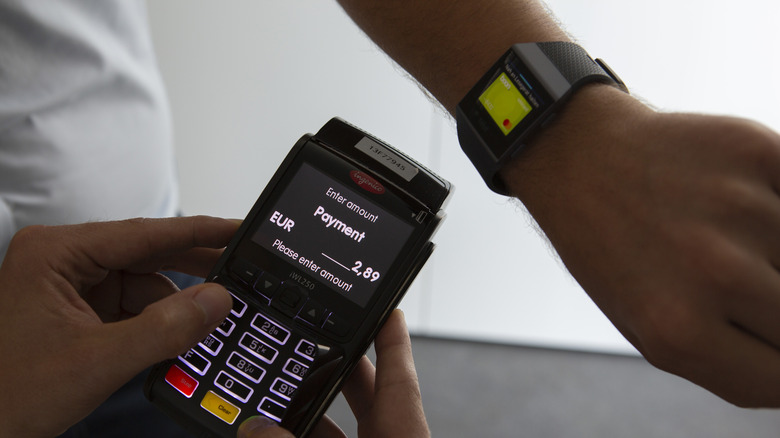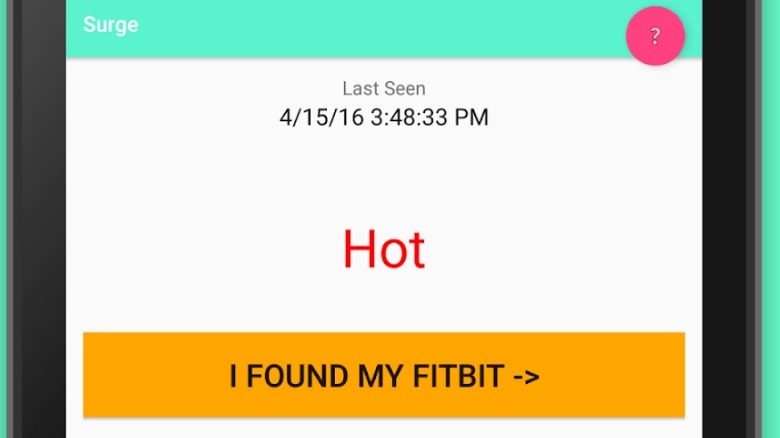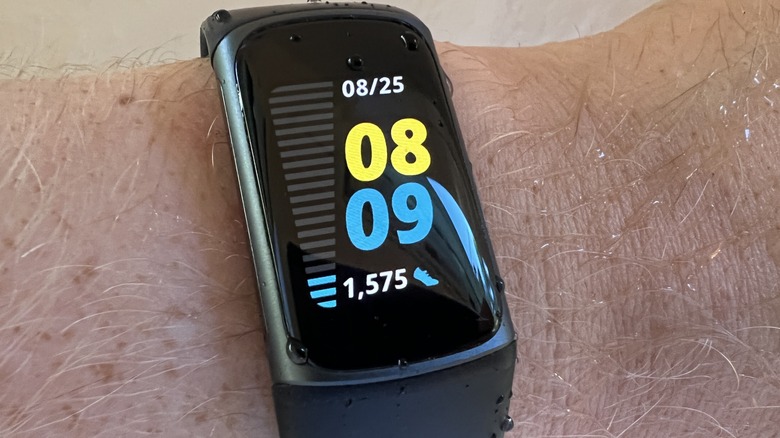10 Of The Most Useful Fitbit Tips, Tricks, And Hidden Features
In a world that is becoming more and more obsessed with smart devices, fitness trackers and smartwatches are some of the most popular examples. Although they may resemble a traditional wristwatch, they offer far more in terms of their features and the ability to connect to the internet. In a crowded market that includes many different manufacturers, Fitbit has remained at the forefront with its range of devices.
As you may have guessed from the name, Fitbit has a particular focus on upgrading workout routines by helping its users track their activity and measure their progress as they go about their day. Most people who have used a Fitbit device will know about the basic functions, like the step counter or heart rate monitor, but there are also lots of hidden features and functions that are not as widely known.
Here, we are going to dig through some of the most useful tips and tricks that you may not know about, as well as detail some of the features that have been kept under wraps.
Link up with your friends
Let's be honest, staying motivated while trying to lose weight or get more active can be one of the most challenging aspects of the experience. One way to help with that can be to exercise with your friends and family in some manner. This can encourage you in a few ways, as you know that you are somewhat accountable to those people, and it provides something of a competitive edge as you try to do better than them.
Fitbit knows this, and allows users to make groups and add friends through the official companion app or website. From here, it's possible to see leaderboards between everyone you are connected with, displaying who has the most steps as well as other metrics. While the company controversially removed some of the more interesting community features recently, you can still communicate with your friends through the app and look at their public information to see things such as their badges and accomplishments.
A similar function also gives users the ability to link up several accounts that are part of the same family. Once this has been done, parents can keep a close eye on a child, tracking their activity and progress. For those who want more in-depth information, entering child view provides data such as sleep cycles and more detailed stats about their recent activity.
Track your food and drink
There are a lot of options when it comes to tracking your food intake, a process that has become more popular in recent years as a weight loss and health aid. This is primarily done via calorie counting, with a wide variety of apps giving users the ability to enter the food they have eaten throughout the day and see how many calories they have eaten. Some of the more widespread options include MyFitnessPal, Lifesum, and HealthifyMe, all of which allow you to enter food and drink intake and set caloric goals to aim for.
Many people who own Fitbit devices might not know that the companion app and website can do the same thing. This is particularly useful for those who already use the Fitbit app for other reasons or own a Fitbit device, as it means that you don't have to use multiple apps at the same time and can have everything in the same place. Using food plans, users can enter the food and drink they've consumed — with the app making the process even easier by letting you scan a barcode rather than search for individual items — and see how many calories they have left before hitting their goal.
The Fitbit app can also compare this with your activity and how many calories you've burned through exercise. Using this information, you can see whether you should reduce the amount of food or add in some extra activity.
Personalized coaching on health, fitness, and well-being
While there is a basic service that anyone who owns a Fitbit device can get access to simply by downloading the official app, Fitbit also offers a premium subscription. Known as Fitbit Premium, it offers a lot more content and features to help users get the very best out of their fitness bands and smartwatches. Perhaps the most valuable of these extra features is personalized workouts.
By navigating to the Coach section of the Fitbit app, you can get a wide array of workout routines and guided exercises. These can range from physical activities to help you burn off calories and improve your fitness as well as mindful focus sessions that are designed to improve your mental well-being. Whether you want to meditate before bed or up your heart rate with some exercise, Fitbit Premium has a lot of options to keep you covered.
Another key feature of Fitbit Premium that people might not be aware of is the personalized insights into your sleep. Those who are subscribed to the service get access to a range of tools that aim to assist you in getting a better night's rest and improve the quality of your sleep. Some of the additional information involves giving you in-depth information about how you slept, including when you woke and what stage of sleep you were in throughout each part of the night, as well as a smart wake function that will set off your alarm at the optimal stage of sleep.
Use Mobile Track to always measure your steps
Almost every single Fitbit device in existence will measure certain stats as you go about your day. Generally, trackers will measure the number of steps you have taken, the distance you have covered, and your heart rate at any given moment. Unfortunately, having your Fitbit device on you at all times is not always feasible. Fitbits, like other smart devices, require regular charging, and it may not be acceptable to wear a smartwatch or fitness tracker in certain circumstances.
That doesn't mean, however, that you have to completely give up on tracking your steps just because you don't have your device strapped to your wrist. Fitbit has something known as Mobile Track, which allows users to use their phone to measure certain data points like steps and distance using a smartphone's built-in sensors. To enable this, you simply have to go to the Fitbit app on your mobile phone and add the phone through the devices page in the settings, getting rid of the need to always have your Fitbit device on as you won't miss out on those valuable steps as long as you have your smartphone on you.
Turn on Water Lock when swimming or showering
The vast majority of Fitbit devices are designed to IP68 standards when it comes to dust and water resistance. IP ratings, as far as users are concerned, indicate that the device can be submerged in water and won't be damaged up to a depth of 50 meters. While that doesn't make the devices waterproof, they are water-resistant enough to make them suitable to be worn when showering or swimming. That's especially useful for Fitbit devices that are designed to track exercises, as you can still track your progress while doing lengths in the pool.
Since most Fitbit devices have some sort of touch-screen interface, it isn't usually possible to properly navigate menus or access features. However, it is possible for water to accidentally activate the screen or touch-based buttons, which may become frustrating if it messes with your settings or opens apps or notifications. To combat this, Fitbit devices have a function called Water Lock.
This essentially disables the screen and any buttons so they won't be activated by the water while still allowing the device to receive notifications and track activity. Turning the Water Lock on usually involves swiping to the appropriate setting from the main menu. It can then be turned off with two firm taps on the screen once you are out of the water.
Control your music on the move
If you are going out for a run or to the gym, you might not necessarily want to have your smartphone with you. After all, these devices are typically pretty big and heavy, especially compared to a fitness tracker or smartwatch. This can make them inconvenient to carry around during exercise, and there's always the danger that they might be misplaced or damaged. For most people, however, the benefit of listening to music or a podcast while working out outweighs the disadvantages of carrying a smartphone.
Some Fitbit devices offer an alternative, though, that essentially allows users to play music directly from the device rather than a smartphone. The Sense, Versa, Versa 2, and Versa 3 all support the ability to download music directly onto the device. Once that has been done, you can switch your music source from a phone to the Fitbit device and directly control the playback from the watch screen.
These Fitbit devices also support Bluetooth audio devices, allowing users to listen to their music using wireless headphones or speakers without the need to be connected to their smartphones at the same time. As a result, you can go out with just your Fitbit device and still listen to audio content while you exercise.
Use voice commands with AI assistants
Voice assistants are becoming more and more popular, with the likes of Google Assistant and Alexa now used on a huge array of smart devices. These devices can make life much easier, giving people the ability to get information, carry out tasks, or perform certain functions simply by saying a command out loud. So it shouldn't come as a surprise that certain Fitbit devices — namely the Fitbit Sense, Fitbit Sense 2, Fitbit Versa 2, Fitbit Versa 3, and Fitbit Versa 4 — now support both Alexa and Google Assistant.
The only downside to this integration is that the microphone on your Fitbit watch is not always on. Because of this, the voice assistants cannot be initially activated simply by talking to them like on other smart devices when you would say "Hey Alexa" or "Okay, Google." Instead, the voice assistants will only begin listening when you open up their respective apps on the Fitbit device, although this is fairly easy to do and can even be set up as a shortcut so you don't have to navigate through multiple menus.
Once you've signed into your respective voice assistant account and activated it on your Fitbit, you can then use it to do everything you'd expect to be able to when using it on other devices. This can include setting timers or alarms, asking for information from the internet, or starting tasks on the Fitbit device such as tracking an exercise.
Fitbit Pay lets you make contactless payments
Gone are the days when customers had to swipe a credit card and then sign a receipt when making a purchase. Contactless payments are very much in vogue, making life all that much easier. Whether you are an iPhone owner using Apple Pay or an Android user with several digital wallets, it is simple to set up contactless payments on a smartphone and then tap the device to pay for goods and services.
Many smartwatches also feature this functionality, allowing you to load multiple debit and credit cards onto the device so you can pay contactlessly rather than using your card or smartphone. In recent years, Fitbit has launched its own version of this technology in the form of Fitbit Pay. Available on Sense 2, Sense, Versa 4, Versa 3, Versa 2, Versa Special Edition, Ionic, Charge 3 Special Edition, Charge 4, Charge 5, and Charge 6, Fitbit Pay can be used in locations around the world where contactless payments are accepted.
This can be incredibly useful when you might not want to carry multiple devices or a wallet with you and offers a convenient way to make payments on the go. Several Fitbit devices, such as the Charge 6, Sense 2, and Versa 4, also support Google Wallet, so you can have a single digital wallet across all of your devices.
Get help finding a lost Fitbit
By their nature, fitness trackers and smartwatches are on the small side compared to other smart devices like mobile phones and speakers. That can make misplacing them pretty easy, as they are small and light enough to fall into tight spaces or under other objects. Unfortunately, Fitbit doesn't offer much in the way of helping you find a lost device outside of some generic advice about trying to sync with the Fitbit watch or tracker from your phone to determine if it is close by.
While the Inspire 2 does have Tile integration, this is a unique feature among Fitbit devices. That doesn't mean there isn't a way to locate a missing Fitbit, though, as there are some useful third-party solutions. Finder for Fitbit and Find My Fitbit are two apps that can help locate a lost device. Both use the Bluetooth signal emitted from the device to determine how far away it is, giving an approximate location and direction.
For example, Find My Fitbit tells users whether they are cold, warm, or hot in terms of how close they are to the missing device. Of course, both of these apps only work if the Fitbit device still has power and Bluetooth is turned on, but they can prove invaluable in locating a lost tracker or smartwatch that is hiding out of sight.
Get even more out of your Fitbit with Integrations
Many users will already know that the Fitbit app can connect to a variety of other apps. The likes of MyFitnessPal, Runkeeper, Weight Watchers, and Withings all offer Fitbit integration to some degree, allowing you to share information and data. This can be very useful for those who want to keep all of their health and fitness details in one convenient place or want to take advantage of a particular feature in another app but still use their Fitbit device.
However, Fitbit also supports IFTTT (If This Then That), an automation platform that offers Applets that can perform functions automatically based on set criteria. In the case of Fitbit, this can range from exporting your daily activity to a Google spreadsheet so you have a copy of everything you have done to triggering a celebration when you reach a certain goal, such as making a predetermined number of steps.
These IFTTT integrations can also do more complex actions. For example, if you don't get the required amount of sleep that you set, an Applet can be created to set a reminder in your calendar that you need to go to bed earlier the following night to catch up on your rest. Other automations include setting up weekly emails that will notify you of everything you've done over the previous seven days as well as sending messages to your smart speaker to tell you to go for a walk after a certain amount of inactivity has been detected.
